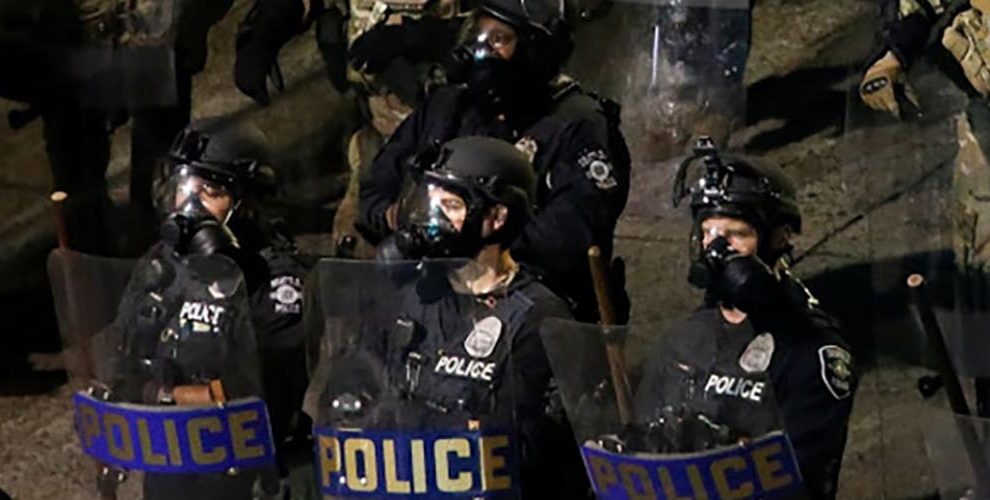Perry Center Professor Pat Paterson’s most recent book examines the complex security environment facing Latin American military forces and the legal sources that determine use-of-force rules. It is an environment that requires a hybrid doctrine that draws from both the laws of war and criminal law simultaneously. His monograph, The Blurred Battlefield: The Perplexing Conflation of Humanitarian and Criminal Law in Contemporary Conflicts, was supported by a research grant from by the Joint Special Operations University (JSOU).
Violence in many countries is not caused by conventional state-on-state armed conflicts but rather from criminal activity – often as intense and violent as warfare. In most of these cases, the Law of Armed Conflict (LOAC) does not apply; there is no armed conflict per the legal definition of the term. However, these “low intensity” conflicts are so violent that the militaries in many countries have been tasked to support domestic law enforcement, efforts that are governed by criminal and human rights law. Military use of force tactics are different from police tactics. Countries using their Army for internal operations need a hybrid doctrine on the use of force in order to permit soldiers to conduct police work.
Militaries in almost every single one of the nations in Latin America have been deployed internally to their countries to battle organized crime groups and drug trafficking organizations (DTOs). With no legal doctrine to rely on, each country had to develop a hybrid set of rules on the use of force—a mix between the military firepower common under the Geneva Conventions and the restrictive rules use by police in criminal law.
Professor Paterson looks at the issues through two separate lenses: first, from US Special Operations Forces (SOF) and second, through a detailed examination of how four Latin American countries have managed – or tried to manage – the complex legal pitfalls of modern conflict.
As part of the US government’s security cooperation enterprise, US Special Operations Forces (SOF) provide a large scope of military assistance to the armed forces of the US partner nations. Each year, Army SOF and Navy Seals visit dozens of nations and train tens of thousands of foreign forces in a variety of military tactics: tactical combat casualty care (or other types of medical training), close quarters battle/close quarters combat, combat marksmanship, small unit tactics, mission planning, long range marksmanship, demolitions, and urban operations, just to name a few. However, they prefer leaving the legal requirements for the use of force to others. The legal complexities of contemporary conflict are so profound that SOF operators rely upon Judge Advocate General (JAG) officers (military lawyers) to provide that training.
He also uses a second lens to scrutinize this environment from the perspectives of four Latin America countries: Brazil, Chile, Colombia, and Mexico. In Brazil, the military deployed into the favelas, or heavily populated slums, of Rio de Janeiro to combat violent gangs and drug trafficking groups. The second case study addresses the complexity faced by international peacekeepers. From 2004 to 2017, as part of the United Nations Stabilization Mission in Haiti (MINUSTAH), Chilean peacekeepers conducted difficult military operations against armed gangs in Haiti. The third case study explores the decades-long internal armed conflict in Colombia, perhaps the Western Hemisphere nation with the most developed hybrid doctrine. The final case study explores military efforts to battle heavily armed drug cartels in Mexico. In each case, Professor Paterson describes the complex security environment and how the military and Ministries of Defense have attempted to navigate the grey areas.
The monograph addresses three important issues: (1) the nature of contemporary warfare, (2) SOF participation in security cooperation efforts, and (3) rules on the use of force. The author provides a brief history of LOAC, criminal law, and HR law, highlights the differences between the fields of law, and examines US use of force policies. Readers will learn lessons on the distinctions between the Law of Armed Conflict and criminal law, particularly on important issues like lethal force, escalation of force tactics, and detention. Professor Paterson’s research for the book included 75-80 interviews and site visits to SOF military units throughout the US as well as to locations in Brazil, Chile, Colombia, and Mexico.
With a foreword written by former United Nations Special Rapporteur Juan Mendez, this monograph will be essential reading for policymakers and those whose task is the development of granular precepts to guide implementation and execution of policy on the ground. One of the reviewers writes, “The Blurred Battlefield is the culmination of years of exhaustive scholarship on the lawful use of force during military and police operations that will be the primary go-to reference for those of us who teach human rights and humanitarian law to service members and law enforcement officials.”


